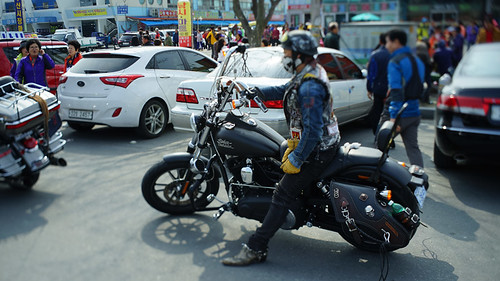‘Give safe bike riders incentives’
Riders #Riders

PETALING JAYA: With traffic accidents happening once every 60 seconds, road safety experts suggest that motorists be provided “incentives” to improve their behaviour on the road.
Malaysian Institute of Road Safety Research (Miros) chairman Dr Wong Shaw Voon said that current enforcement and advocacy efforts might be insufficient to deal with the situation.
“Fatal road accidents are the leading cause of death among Malaysians between five and 40 years old.
“This is not only an unnecessary loss of lives but also a loss in national productivity as most of those killed are in the prime of their lives,” he said.
Statistics revealed during the 7th United Nations Global Road Safety Week in Kuala Lumpur in May showed that 545,630 road accidents were recorded in 2022, which is about one accident per minute.
Of this total, 6,067 resulted in fatalities.
According to the Road Transport Department, road users, especially motorcyclists aged between 15 and 35, are viewed as a high-risk group where road accidents are concerned.
Almost 60% of fatal road accidents involve motorcyclists.
Wong attributed the high number of accidents to an increasing number of vehicles, particularly p-hailing riders, on the road.
Although some riders are at fault, he said the p-hailing model was also a factor.
“P-hailing platform providers could consider introducing a system to track their riders to ensure they obey traffic rules.
“This can be easily done as the movement of p-hailing riders is already tracked on delivery map applications.
“They will be able to tell if riders are speeding, beating the traffic red light, or taking an illegal route.
“Riders that obey the regulations can be rewarded, and those who don’t should be guided to become safer riders,” he added.
Another method of improving the behaviour of road users, Wong said, was to expand the non-claims bonus (NCB) policy offered by insurance companies.
“The NCB only comes into play if no claims are made.
“This could be expanded to cover companies, p-hailing providers, and individuals who obey traffic rules by giving them due recognition,” he said.
Malaysian Association of Driving Institutes president Mat Aris Bakar believed that the high number of accidents was due to an increasing number of inexperienced p-hailing riders.
“Most of them are young and inexperienced.
“They tend to speed as they are chasing to make more trips and earn more based on the current business model,” he said when contacted.
He suggested that p-hailing riders, especially those who got into accidents, go for further motorcycle skills training to better understand the hazards they face while on the road.
Their employers or the government should also introduce a reward or incentive scheme for motorcyclists who remain accident-free for a specific duration, he added.
Mat Aris said that insurance companies could also sponsor additional skills driving programmes for young road users, such as what is done in Australia for motorists aged between 17 and 25 who pass their tests.
Those undergoing the training programme would be given incentives such as lower insurance premiums or other rewards, he added.
Malaysia E-Hailing Drivers Association president Daryl Chong said that they had always advocated for safety on the road among their members.
“We do not condone or accept cases or claims that involve reckless and inconsiderate ehailing drivers.
“They have big responsibilities as drivers,” he said.
In view of the higher number of vehicles on the road nowadays, Chong called for a stricter syllabus for obtaining a driving licence so that a new generation of drivers is aware that they could be “behind the wheels of a killer machine” if they were careless.
“It’s too easy to obtain a driver’s licence in Malaysia.
“New drivers should be exposed to defensive driving techniques, which can be very helpful when facing danger,” he said.
He also said that young riders, especially those in their teens, lacked road safety knowledge and courtesy.
“They also tend to be more easily provoked or behave emotionally when triggered by other reckless road users,” he said.
Road safety expert Assoc Prof Dr Law Teik Hua cited the lack of enforcement against motorcyclists as a reason for high accident rates involving young riders.
“Even though there are exclusive motorcycle lanes along the Federal Highway, many motorcyclists are not using them,” he said, citing incidents of crashes involving motorcyclists along the highway.
Universiti Kebangsaan Malaysia public health expert Prof Dr Sharifa Ezat Wan Puteh said there was a need for better road designs and enforcement.
The current syllabus and motorcycle exam in driving schools should also be better enhanced by incorporating modules on basic road and traffic laws and exposure to defensive riding, she said.
As for the findings that showed younger drivers aged between 15 and 30 are more associated with higher numbers of accidents and deaths, she attributed this to factors such as their lower likelihood of adhering to rules and limited patience.
“A few of these deaths are attributed to substance use and abuse, such as by long-distance and heavy vehicle drivers.
“In some cases, these drivers have to make the deliveries by a certain time, and hence we see them rushing against time,” said Dr Sharifa, who is also the president of the UKM Bikers group.